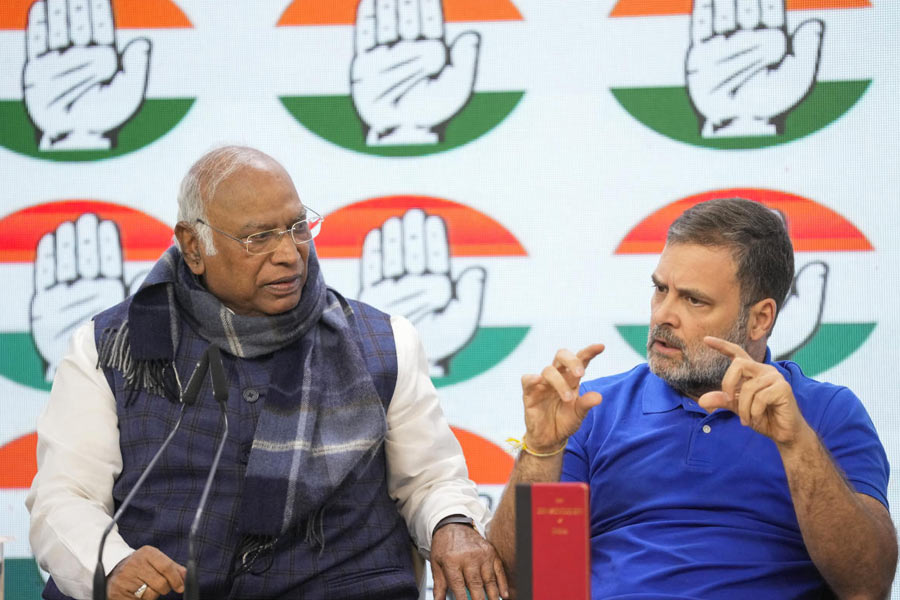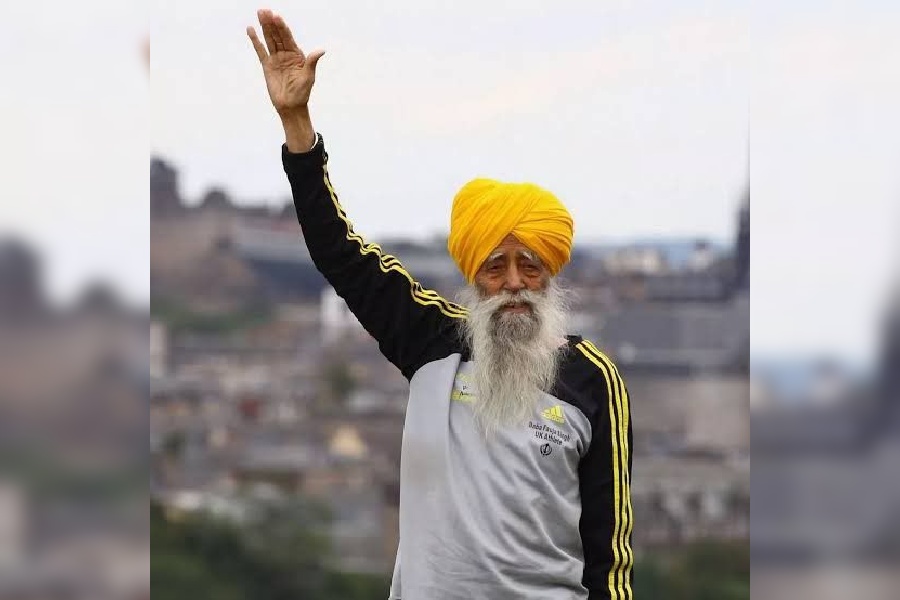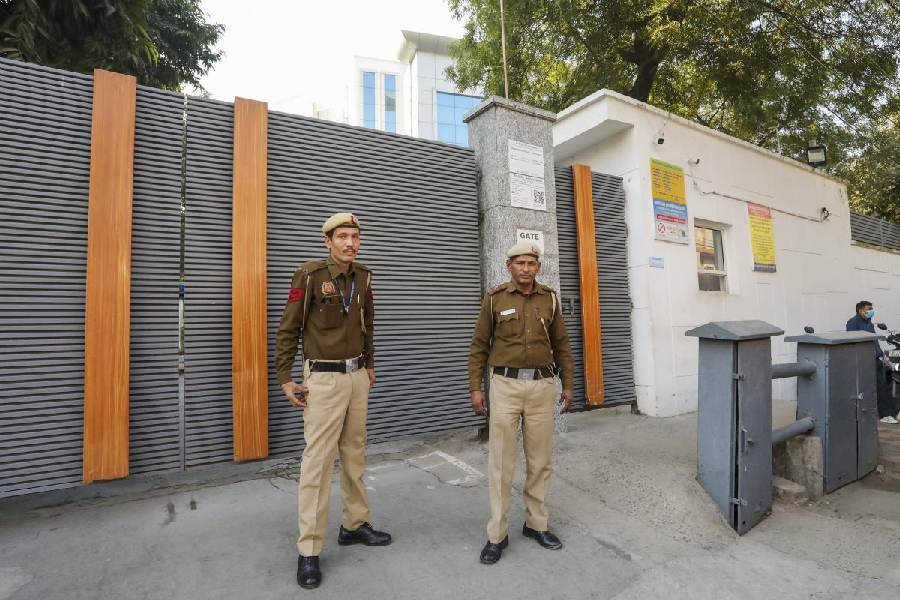
BENGAL MARXISM: EARLY DISCOURSES AND DEBATES By Anuradha Roy, Samya, Rs 600
Incisive and polemical, this excellent appraisal details and describes the creative-critical journey of the quintessential Bengali Marxist. Devoted to dialectical materialism at the level of rarefied theory, blinded by the glittering future of the flawless utopia, given to ceaseless discussions and debates, the Bengali Marxist or Bengal Marxism did not have the time, energy and inclination to come down to the streets and fields to wage socialist battles. Not the 'social being' but the 'human consciousness' determined his or its mission.
But what happens when the resplendent theory does not culminate in desired praxis, that is, when it turns solipsistic, self-sustained and autonomous? Such a theory, not nurtured by practice, provokes even more theories and energetic debates on the latter. One such crucial debate centred around the controversial evaluation of Rabindranath Tagore's creativity and weltanschauung. Prompted by Andrei Zhdanov and supported by the extremist, B.T. Ranadive, Bengali Marxists in the Forties and Fifties of the last century debunked Tagore as a feudal and bourgeois dreamer. Indeed, the assault reached its peak in the two books written by the sociologist Binay Ghosh. Titled Shilpa Sanskriti O Samaj and Natun Sahitya O Samalochona, these books condemned Tagore as a great and solitary reactionary. In the words of Ghosh, "Tagore is sitting in the desolate and secure chamber of the Middle Ages under the tutelage of rajas, badshahs and wazirs. Further, he was patronized by the minority of rajas, maharajas and capitalist class; and his abstract, vapoury and vague humanism are meant to glorify his own class directly."
This official, iconoclastic evaluation raised a storm, with the anti-Tagore brigade applauding Binay Ghosh's breakaway courage, and the pro-Tagore brigade determined to take up the cudgels on the poet's behalf. Amal Hom, Tagore's devoted disciple, reacted sharply to the critique in his uncompromising rejoinder carrying the suggestive title, Kerani Rabindranath. Hom wrote, "I would like to remind and warn you once again - please do not get trapped in the telltale slogans. Don't be perplexed by the criticism of leftist writers. Rabindranath belongs to the entire humankind, he is not the spokesman of any particular ideology. Whatever is the human being's good or bad, his conflict and suspicion, his hopes and desires, his fulfilment and failure - are reflected in his poems, stories and songs."
Anuradha Roy has offered an admirable account of this open debate and has closed the embattled discourse by referring to Bishnu Dey's brilliant account of Tagore's genius. In point of fact, Bishnu Dey's evaluation serves as the last word on this inflammatory subject. In his pathbreaking essay, "Rajay Rajay", Bishnu Dey observed with justified adulation, "It is difficult to launch a comparison. Perhaps, if we decide to merge Chaucer with Goethe and Hugo, we shall come close to measuring his genius. But even then the comparison will be inadequate... He taught us civilised disposition. No amount of stubborn myopia can overrule or belittle the inheritance of his sophisticated taste... his emergence in the Bengali literary world was a phenomenal event, as earth-shaking as Galileo's arrival in the medieval world... we cannot compare him with a raging current, he is more like a deep and profound lake in the Himalayas." It needs to be mentioned in this context that Binay Ghosh, in an interview given to the reviewer in 1983, admitted that he had been far too harsh in his assessment of Tagore.
Anuradha Roy has selected one high-voltage debate after another to delineate the entire canvas of the Marxian discourse and invited the reader to arrive at his or her own judgment or verdict. She has placed the contrary viewpoints clearly and comprehensively, encouraging the readers to reach their own conclusions.
If Tagore, the last and most spectacular representative of the Bengal Renaissance, was subjected to such a scorching enquiry as detailed above, his forebears and pillars of the Bengal Renaissance were also not spared. Diehard critics like Pradyot Guha, Bhowani Sen, Ganen Bandopadhyay and Sitangsu Mitra focused on what they called the bourgeois-semi-feudal literary heritage of the 19th century and sharply reviewed the role, spirit and actions of the pillars of the Renaissance. The entire cosmovision was critically surveyed and the senior theoretician, Bhowani Sen, contended that the Bengal Renaissance was reactionary from its very inception and so were its creative and social statements.
Indeed, Bhowani Sen and his Zhdanovite lieutenants maintained that the literature flowing down from Rammohan Roy to Rabindranath was not only comprador-bourgeois in character but also a reflection of the decadent Hindu feudal class. This criticism, they held, was obvious because British imperialism did not destroy feudalism. Rather, it nourished and sustained feudalism through the medium and basis of the Permanent Settlement. This vituperative body of criticism encouraged drastic and contrary views as well, which were voiced by Narahari Kabiraj, Nirendranath Roy, Mangalacharan Chattopadhyay, Sanat Bose and Manik Bandyopadhyay. In fact, Manikbabu's appraisal was decisively cogent and correct. Depending on the Marxian postulate of 'accept and reject' (grahanbarjan niti) he wrote, "A stream of progressive thought and creativity flowed down Rammohan, Vivekananda, Kaliprasanna, Dinabandhu, Michael, Rabindranath, Nazrul. More or less, I was aware of my position which said that we should be scrupulous while accepting this tradition, we should measure the bright and dark points and arrive at a positive and not denunciatory conclusion."
The author thinks that this practice of searching for reactionary and progressive elements was arbitrary and led nowhere. To tell the truth, the approach was hopelessly confusing because each and every cardinal figure partly fitted into the laudatory mode and partly into the condemnatory mode. Take the specific example of Vivekananda. He highlighted the importance of religion and to the extent that he was an 'obscurantist'. Yet, at the same time, he cherished a democratic outlook; he placed faith in the emergence of Shudra power; he had a repulsion for despotism; he preached humanism and rationalism. All these positive attributes prompted Narahari Kabiraj and Nirendranath Roy to call him progressive.
What needs to be underlined at this point is the fact that those who debated and tabled discourses were all incorrigibly middle class. As the author has observed, "Bengali intellectuals reflected considerably on the theory of Marxism and produced a large corpus of literature, but this was not much related to the development of the actual communist movement in the country in practice. There was a disjunction between theory and practice in Bengali communism right from the beginning". This disjunction stares us in the face when we pinpoint the themes of the great debates. Not one of them was related to concrete praxis. Rather, the emphasis was on the following as noted by Anuradha Roy - Is Marxism a science or a moral ideal?; Is Marxism a teleological dogma of predestination or sheer opportunism for that matter?; Is Marxism a paradharma (an alien ideology) for India?; Is Marxism only based on petty material interests, in this sense, is it a sister to capitalism?; How should the relationship between the individual and society be determined by communism?
Most of these themes were analysed threadbare by the Western Marxists at around the same time. The author, by the way, has written a splendid and concise account of this Marxism in the closing pages of the book.
Only once in the Communist movement of India were theory and practice welded together for a brief period. The welding was done by the Naxalites or Maoists. Their theory, however, was erroneous and the practice that it provoked was erroneous as well. But, again, that is an entirely different story.










